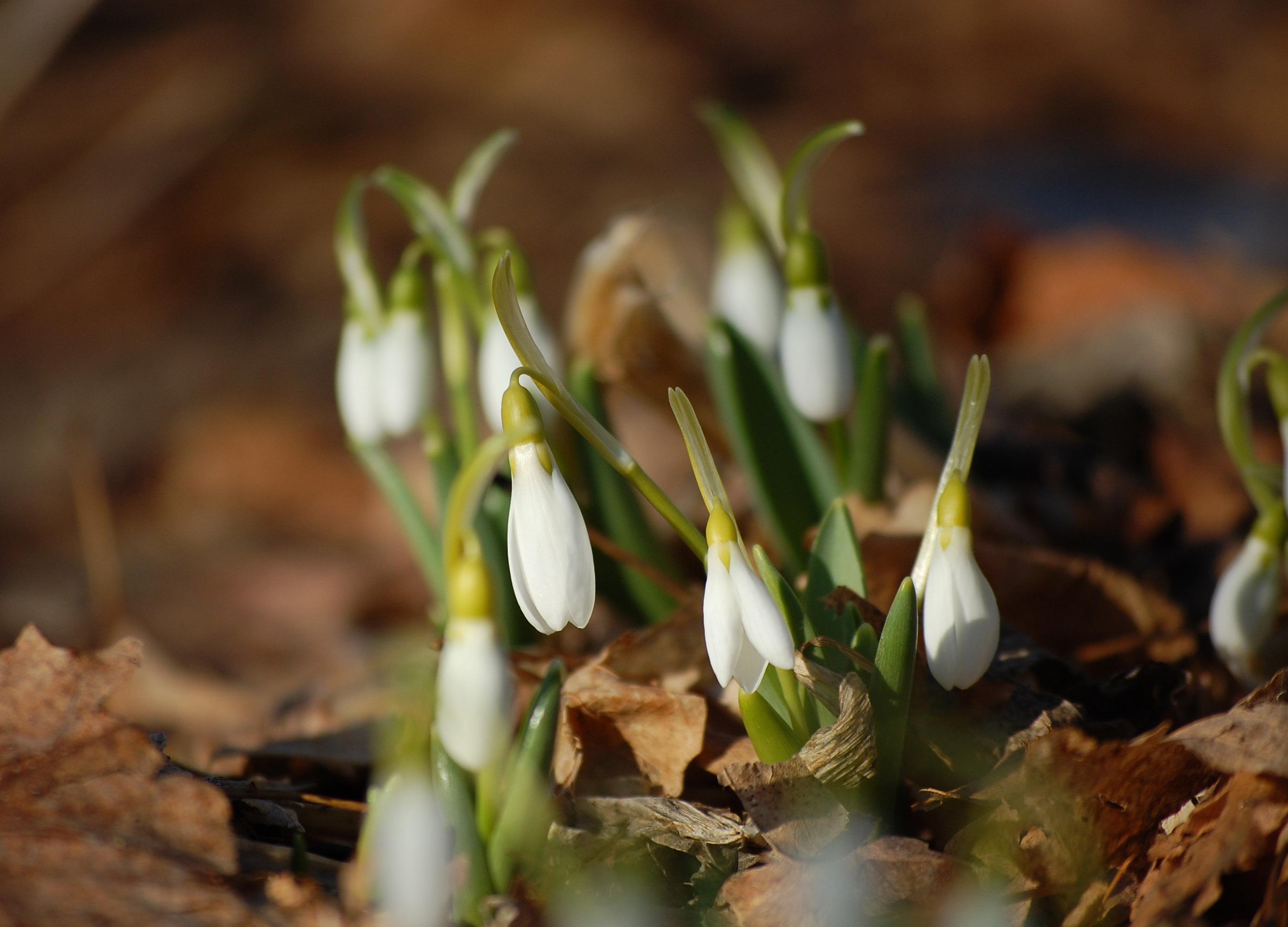
2 minute read
Signs of Spring
Matt Schuth • Naturalist
As the bitter, frigid days of old man winter stubbornly give way to the coming season of green, early signs of spring appear. A mother great-horned owl sits resolutely on her nest in spite of falling snowflakes covering her in a cloak of white. A thick coat of feathers keeps her eggs warm until the young owlets greet the world covered in their own fluffy down.
Sugar maple sap begins to drip as temperatures rise and hungry gray squirrels eagerly lick the sweet nutritious liquid.
On the forest floor, only tiny brown patches of leaf litter show through ice-crusted snow. Despite these freezing conditions, a remarkable, delicate flower forces its way up to reach the warming rays of sunlight.
This incredible flower is commonly known as snowdrop (Galanthus nivalis), in Greek meaning “milky snow flower.” The French call it “snow piercer,” because it appears to slice through the late-winter snow. Snowdrops survive their early spring emergence because they contain proteins that keep thin tissues from freezing when temperatures plummet.

Snowdrops are native to Europe, but have become naturalized in America, meaning they can reproduce on their own in their new environment. They reproduce from offsets, which are new bulbs attached to the mother bulb, and are one of the most widely traded bulbs in the world.
Snowdrop seeds are spread by ants that take the seedpods back to their den to feed their young. Ants do not consume the seeds but feed on the elaiosome, the fat covering of the seed, leaving the seeds to reproduce.
Some cultures believed that the white shroudlike petals were associated with death and bad luck, making it unlucky to bring the first snowdrop flower into a house. Most cultures, however, called it the “flower of hope” symbolizing new beginnings, rebirth and an ability to overcome challenges — including the long northern winter.
Snowdrops are the first flowers to bloom at the Arboretum and can be seen along the Hosta Glade trail. The poet Alfred, Lord Tennyson’s words sum up our feelings toward the snowdrops: “Many, many welcomes, February’s fair-maid.”


